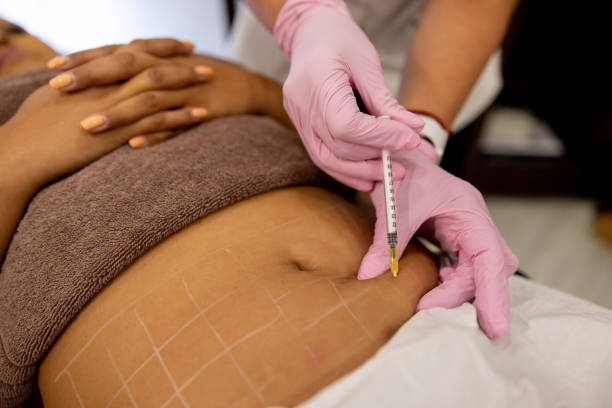
by tahahussain | Sep 16, 2025 | Health
Laser Liposuction in Riyadh has become a popular solution for people seeking precise and effective fat removal. Unlike traditional liposuction, this modern technique uses laser energy to melt fat cells before removal, offering a less invasive option with faster recovery times. If you are looking to target stubborn fat deposits that resist diet and exercise, laser liposuction can be an excellent choice.
What Is Laser Liposuction?
Laser liposuction is a cosmetic procedure that uses controlled laser energy to liquefy fat beneath the skin. This melted fat is then gently suctioned out with minimal trauma to surrounding tissues. The key advantage is the laser’s ability to also stimulate collagen production, which tightens and firms the skin, creating a smoother contour post-treatment. This dual benefit makes Laser Liposuction in Riyadh highly sought after by individuals wanting both fat reduction and skin improvement.
How Does Laser Liposuction Target Fat?
This procedure is especially effective for targeted fat reduction in areas such as the abdomen, thighs, arms, and chin. The precision of the laser allows practitioners to focus on specific pockets of fat without affecting surrounding muscles or tissues. Additionally, the laser’s heat helps break down fat cells in a controlled manner, making fat removal easier and less painful.
Benefits of Laser Liposuction for Targeted Fat Reduction
Laser liposuction offers many advantages over traditional methods. These include:
-
Minimal invasiveness and reduced bruising
-
Faster recovery and less post-operative discomfort
-
Skin tightening due to collagen stimulation
-
Precision in removing fat in small or delicate areas
-
Reduced chances of uneven results or sagging skin after fat removal
For those aiming at sensitive or sculpted areas, Laser Liposuction in Riyadh provides a way to enhance body shape without the extended downtime.
Who Is an Ideal Candidate?
Ideal candidates are individuals close to their target weight but struggling with localized fat bulges that don’t respond to lifestyle changes. Good skin elasticity is also important to maximize skin tightening benefits after fat dissolution. Before proceeding, a medical consultation is essential to evaluate overall health, goals, and the areas suitable for laser-assisted fat removal.
What to Expect During the Procedure
During laser liposuction, a small incision is made to insert a thin laser fiber into the fat layer. The laser melts the fat cells, which are then gently suctioned out with specialized equipment. The procedure usually takes less time than traditional liposuction and is performed under local anesthesia, reducing risks associated with general anesthesia.
Recovery and Aftercare
Recovery is quicker compared to traditional liposuction due to less tissue trauma. Mild swelling and bruising may occur but typically resolve within a few days to weeks. Wearing compression garments helps reduce swelling and supports skin tightening. Patients are generally encouraged to stay hydrated, avoid strenuous activities initially, and follow their provider’s instructions carefully to ensure optimal healing.
How Effective Is Laser Liposuction for Fat Reduction?
Laser liposuction is highly effective for removing targeted fat deposits, providing noticeable contour improvements. While it is not a weight loss procedure, it helps eliminate stubborn fat that impairs body silhouette. When combined with a healthy lifestyle, results are long-lasting. The skin tightening effect is an added benefit that sets this method apart from conventional fat removal techniques.
Potential Risks and Side Effects
As with all procedures, there are some risks. These include temporary swelling, bruising, mild discomfort, and rare incidents of skin burns or irregular contours if not performed properly. Choosing experienced professionals and following all pre- and post-procedure guidelines reduces these risks significantly.
Laser Liposuction vs. Traditional Liposuction
| Feature |
Laser Liposuction |
Traditional Liposuction |
| Invasiveness |
Minimally invasive with laser energy |
More invasive with manual suction |
| Recovery Time |
Faster, less discomfort |
Longer, more bruising |
| Skin Tightening |
Yes, due to collagen stimulation |
Usually requires additional treatment for sagging skin |
| Suitability |
Targeted small fat areas |
Larger fat removal possible |
| Pain and Swelling |
Reduced |
More intense |
Maintaining Results After Laser Liposuction
To maintain the benefits of laser liposuction, combining it with regular exercise and balanced nutrition is vital. Staying active helps prevent fat recurrence and promotes overall well-being. Hydration, skincare, and weight management will support the skin tightening achieved by the procedure.
FAQs
What areas can be treated with laser liposuction?
Laser liposuction is effective for various body parts, including the abdomen, thighs, arms, neck, and chin, focusing on localized fat deposits.
Is the procedure painful?
Most patients experience minimal discomfort as laser liposuction is performed under local anesthesia, with less bruising and swelling than traditional methods.
How soon will I see results after laser liposuction?
Visible results often appear within weeks, with full improvement noticeable in 3 to 6 months as swelling subsides and skin tightens.
Can laser liposuction help with skin tightening?
Yes, the laser stimulates collagen production, which improves skin firmness and reduces sagging in the treated area.
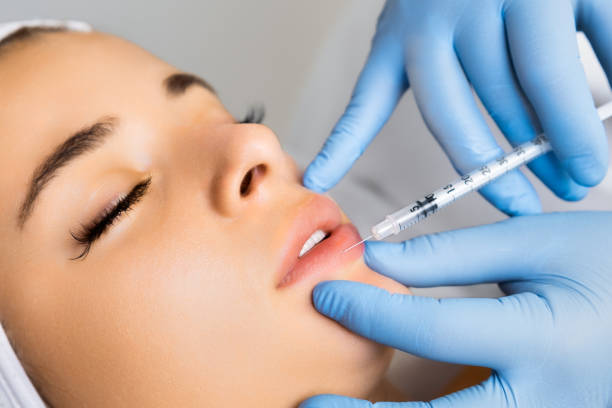
by tahahussain | Sep 15, 2025 | Health
Understanding the timeline of results after a Botox lipflip treatment is essential for anyone considering this popular cosmetic procedure. Knowing when changes will appear and how long they last helps set realistic expectations and ensures a more satisfying experience.
What Is a Botox Lipflip?
A Botox Lipflip in Riyadh is a minimally invasive cosmetic treatment designed to subtly enhance the appearance of the upper lip. Unlike traditional fillers that add volume, this procedure uses Botox to relax the muscles around the lip, causing it to “flip” outward slightly. This creates the illusion of a fuller, more defined upper lip without injecting any substance into the lip itself. Because of its subtlety and quick results, the Botox lipflip has grown in popularity for those looking to improve their smile naturally.
The Botox Lipflip in Riyadh Experience: How It Works
When you undergo a Botox Lipflip in Riyadh, small amounts of Botox are injected around the upper lip muscles. This temporarily relaxes the muscles that pull the lip downward, which allows the upper lip to gently roll outward. The procedure is quick, often completed in under 15 minutes, with minimal discomfort.
Results start to become visible as the Botox takes effect, but the timing can vary slightly from person to person. Understanding this timeline will help you know what to expect and when.
When Do You Start Seeing Results?
Typically, the initial effects of a Botox lipflip begin to show within 3 to 5 days after treatment. During this period, the muscles gradually relax, and the lip starts to slightly flip outward. However, the full result usually takes about 2 weeks to become evident. This gradual change is a key reason why many find the treatment appealing—it doesn’t look sudden or overdone.
Because everyone’s body reacts differently to Botox, some people may notice subtle changes earlier, while others might need the full two weeks to observe the final effect.
How Long Do Botox Lipflip Results Last?
Once fully developed, the results of a Botox lipflip generally last between 2 to 3 months. This duration depends on factors such as metabolism, muscle activity, and lifestyle habits. After this time, the muscle activity returns, and the upper lip reverts to its natural position.
To maintain the youthful, enhanced lip appearance, many people schedule follow-up treatments every 3 months. This ensures the lips continue to look natural and refreshed without the need for more dramatic procedures.
What Happens Immediately After Treatment?
Right after the Botox lipflip procedure, some clients may experience slight swelling, redness, or tenderness around the injection sites. These after-effects typically subside within a few hours to a couple of days.
It’s important to avoid rubbing or massaging the treated areas and to refrain from intense physical activity immediately afterward. Following proper aftercare instructions helps ensure the Botox settles evenly and the results are uniform.
Benefits Beyond the Appearance
Apart from creating a subtle plumping effect, the Botox lipflip can also improve the appearance of the smile by exposing more of the upper teeth. This added tooth show creates a more youthful, attractive look without the use of plugs or fillers. Additionally, since the procedure targets muscle movement rather than volume, it offers a natural finish without the risk of lips feeling “heavy” or unnatural.
Who Is the Ideal Candidate?
The Botox lipflip works best for individuals who want a modest enhancement to their upper lip without the commitment or risks of injectable fillers. It is particularly suited for those with thin or slightly downturned lips who desire a softer, more lifted shape.
Because the treatment only relaxes muscles temporarily, it’s a good option for anyone trying lip enhancement for the first time or those seeking a maintenance-only option between filler sessions.
How to Maximize the Results
To enjoy the best and longest-lasting results from a Botox lipflip, it is advisable to:
-
Follow all post-treatment guidelines provided by your practitioner
-
Avoid excessive lip movement or manipulation for the first 24 hours
-
Stay hydrated and maintain good skin care habits around the lips
-
Schedule regular touch-up sessions to sustain the desired look
Implementing these tips can help the Botox settle optimally and extend the effective duration of the lipflip.
FAQs
How soon after a Botox Lipflip in Riyadh can I wear makeup?
Makeup can typically be applied 24 hours after your treatment to prevent irritation or interference with the Botox settling.
Are Botox Lipflip results permanent?
No, the effects are temporary, generally lasting between 2 to 3 months, after which a follow-up treatment is needed for maintenance.
Can a Botox Lipflip give me a dramatic lip transformation?
The Botox lipflip provides a subtle enhancement by relaxing muscles, resulting in a natural, soft pout rather than a dramatic volume increase.
Is the Botox Lipflip procedure painful?
Most people find the treatment quick and comfortable, with only minor discomfort from tiny injections around the lip area.
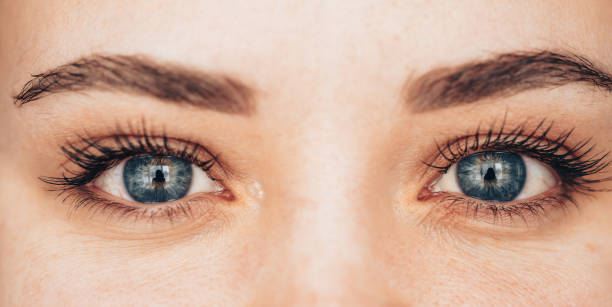
by tahahussain | Sep 15, 2025 | Health
Blepharoplasty in Riyadh (جراحة الجفن في الرياض) is a transformative cosmetic procedure designed to enhance the appearance of the eyelids by removing excess skin, fat, or muscle. It helps refresh your look by addressing sagging eyelids and puffiness, which can make you appear tired or older than you feel. If you are considering this procedure, understanding how to maximize your results is essential for achieving the best outcome.
Understanding the Basics of Blepharoplasty
Before undergoing eyelid surgery, it’s crucial to have a clear understanding of what the procedure involves. Blepharoplasty in Riyadh is tailored to meet individual needs, whether you’re looking to improve the upper or lower eyelids. Knowing your options can help set realistic expectations and prepare you mentally for the transformation ahead.
Blepharoplasty targets the removal of droopy skin and fat deposits that contribute to eyelid sagging and under-eye bags. This enhances not only aesthetics but also, in some cases, vision impaired by excess eyelid skin. Awareness of the procedure promotes informed decision-making for potential patients and highlights the benefits beyond just appearance.
Preparing Your Skin and Body
Proper preparation before surgery forms the foundation for excellent results. Maintaining a healthy lifestyle in the weeks leading up to the operation can positively influence healing and outcomes. This includes a balanced diet, staying hydrated, and avoiding substances that may interfere with surgery or recovery, like smoking and certain medications.
Another essential step is protecting your skin from excessive sun exposure, which can weaken skin elasticity and prolong recovery. Consulting with a specialist on the best skincare routine tailored for pre-surgical care aids in enhancing skin condition and resilience.
How to Choose the Right Surgeon
Selecting a qualified and experienced surgeon significantly impacts the success of your blepharoplasty. Ensure the surgeon specializes in eyelid surgery, understands facial anatomy, and has a portfolio of successful outcomes. Checking reviews and asking for before-and-after photos can boost your confidence in your choice.
Moreover, effective communication with your surgeon is key. Discuss your goals clearly, listen to professional advice, and ask questions about the procedure, risks, and expected results. A well-informed patient is more likely to be satisfied with the surgery.
The Surgery Day: What to Expect
On the day of the procedure, a calm and relaxed mindset can help reduce anxiety. The surgery is usually performed on an outpatient basis, using local anesthesia with sedation or general anesthesia, depending on the case. The surgeon will carefully remove the excess tissue while preserving the eye function, aiming for natural-looking results.
Understanding the surgical process and cooperating with medical staff ensures safety and contributes to a smoother experience. Knowing what to expect helps you feel prepared and reduces stress.
Post-Surgery Care for Optimal Healing
Healing after blepharoplasty is a critical period that demands focused care to ensure the best results. Follow your surgeon’s instructions meticulously—this typically includes using prescribed eye drops or ointments, keeping the head elevated to reduce swelling, and avoiding strenuous activities.
Cold compresses can ease discomfort and swelling in the first few days, while protecting your eyes from sunlight with sunglasses helps prevent irritation. Proper wound care supports quick recovery and lowers the risk of infection or complications.
Lifestyle Adjustments to Support Lasting Results
After complete healing, adopting a lifestyle that promotes skin health will help maintain your blepharoplasty results long-term. A consistent skincare regimen, adequate sleep, avoiding smoking, and managing stress contribute to youthful eyes and overall facial rejuvenation.
Regular eye check-ups and protecting your skin from harsh weather are additional steps that support eye health and appearance. These habits enhance your investment in blepharoplasty and help keep your results looking fresh.
The Role of Realistic Expectations
While blepharoplasty can dramatically improve eyelid aesthetics, maintaining realistic expectations is essential. The goal is a natural enhancement rather than perfection. Understanding that aging continues and that lifestyle impacts appearance helps create satisfaction with your results.
Patients who approach the procedure with clear but balanced expectations tend to experience greater psychological and aesthetic benefits.
FAQs
What is the typical recovery time after blepharoplasty?
Recovery usually takes about 1 to 2 weeks for most swelling and bruising to subside, but full healing may take longer. Following aftercare instructions accelerates this process.
Are the results of blepharoplasty permanent?
Blepharoplasty results last many years, but natural aging continues. Maintaining a healthy lifestyle and skincare regime can prolong the benefits.
Can blepharoplasty improve my vision?
Yes, if excess skin on the upper eyelids impairs your sight, blepharoplasty can remove it and improve peripheral vision.
Is blepharoplasty suitable for all ages?
Blepharoplasty is generally recommended for adults experiencing eyelid sagging or puffiness, but suitability depends on individual health and goals.
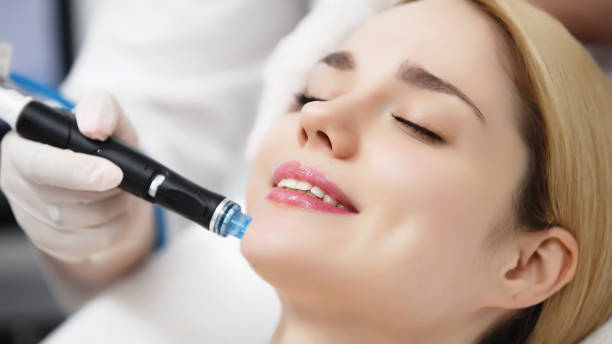
by tahahussain | Sep 15, 2025 | Health
Maintaining healthy, radiant skin is a goal shared by many, and among the various skincare treatments available today, the HydraFacial in Riyadh has emerged as a standout solution. This innovative facial treatment combines cleansing, exfoliation, extraction, hydration, and antioxidant protection to improve skin health dramatically. Understanding how regular HydraFacial treatments can enhance your complexion is key to unlocking glowing and youthful skin.
What is a HydraFacial?
A HydraFacial is a non-invasive skincare procedure designed to deeply cleanse and nourish the skin. Unlike traditional facials, it uses a specialized device to simultaneously exfoliate, extract impurities, and infuse hydrating serums into the skin. This multi-step process targets a variety of skin concerns, including fine lines, acne, enlarged pores, and uneven skin tone. The treatment is gentle enough for all skin types, making it a versatile option for many looking to improve their complexion.
The Benefits of Regular HydraFacial in Riyadh
For those seeking consistent improvement in their skin’s appearance, regular HydraFacial in Riyadh sessions offer remarkable benefits. When done frequently, this treatment encourages sustained skin renewal, helping to remove dead skin cells and prevent build-up of dirt and oils that clog pores. The infusion of potent antioxidants and hyaluronic acid deeply hydrates the skin, improving firmness and elasticity over time. This regular care routine combats the effects of aging, pollution, and sun exposure, gradually revealing a brighter, smoother, and more youthful complexion.
How HydraFacial Detoxifies and Refreshes Skin
One of the standout features of HydraFacial treatments is their ability to detoxify the skin thoroughly. The treatment uses a unique vortex suction technology to extract blackheads, excess oils, and debris deeply lodged in the pores without irritation. This deep cleansing detoxifies the skin and creates a fresh canvas for serum absorption. By renewing the skin’s surface, regular detoxification through HydraFacials reduces the frequency of breakouts and helps maintain clearer skin long-term.
Boosting Hydration and Skin Plumpness
Hydration plays a critical role in healthy skin. The HydraFacial’s blend of nourishing serums packed with hyaluronic acid infuses the skin with moisture, promoting plumpness and reducing the appearance of fine lines and wrinkles. With continuous treatments, the skin’s natural barrier strengthens, retaining moisture more effectively and resulting in a soft, supple complexion. This increased hydration is especially beneficial for those living in dry or harsh climates.
Enhancing Skin Texture and Tone
Uneven texture and dull skin tone can make the face appear tired and aged. Regular HydraFacial treatments promote skin cell turnover and encourage the production of collagen and elastin, proteins essential for firm and elastic skin. This regeneration minimizes rough patches, fine lines, and pigmentation irregularities. The result is an even, vibrant skin tone that radiates health and vitality, improving your overall facial appearance.
Suitable for All Skin Types
Whether you have sensitive, oily, or combination skin, the HydraFacial treatment can be adapted to meet your unique needs. The treatment is customizable, with serums and cleansing steps tailored to address specific concerns such as acne, dryness, or hyperpigmentation. This flexibility makes it accessible and effective for a wide range of individuals seeking long-term complexion enhancement.
What to Expect After a HydraFacial
After a HydraFacial, most people notice an immediate glow and smoother texture. Because the treatment is gentle and requires no downtime, it fits well into busy lifestyles. Over time, with regular sessions, the skin continues to improve, becoming more resilient against environmental stressors. Users often report fewer breakouts, diminished signs of aging, and an overall healthier complexion.
Maximizing Results with a Skincare Routine
To get the most out of your HydraFacial treatments, complementing them with a consistent skincare routine is recommended. Using gentle cleansers, moisturizers, and sun protection daily enhances the treatment effects and protects delicate skin. Hydration and protection from UV rays are essential for maintaining the results achieved through regular HydraFacial sessions.
FAQs
Q: How often should I get a HydraFacial to see real improvement?
It is generally recommended to schedule a HydraFacial once every 4 to 6 weeks for optimal skin renewal and lasting results.
Q: Can HydraFacial help with acne-prone skin?
Yes, HydraFacial effectively cleanses pores and reduces inflammation, making it a beneficial treatment for managing acne.
Q: Is HydraFacial safe for sensitive skin types?
Absolutely. The treatment is gentle and customizable, designed to minimize irritation and soothe sensitive skin.
Q: How long does the improvement from a HydraFacial last?
Results often last about a week after a single session, but regular treatments can extend benefits and improve skin health over time.
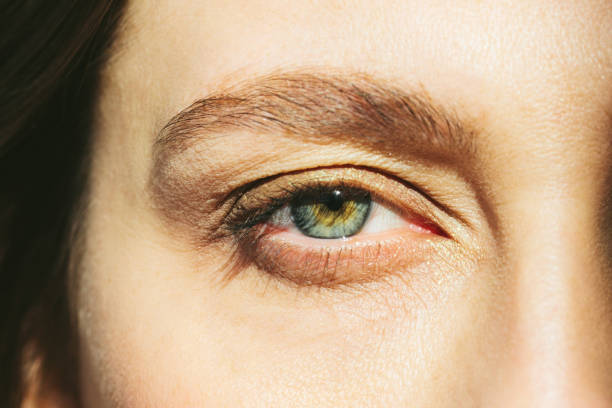
by tahahussain | Sep 15, 2025 | Health
Eyelid Surgery in Riyadh is an increasingly popular cosmetic procedure designed to rejuvenate the eyes by addressing droopiness, puffiness, or excess skin. Understanding the recovery process is essential for patients to achieve the best results and minimize discomfort.
What to Expect Immediately After Eyelid Surgery
Right after the procedure, it is common to experience some swelling, bruising, and mild discomfort around the eyes. Your surgeon will place protective dressings to keep the area clean and promote healing. During this initial phase, it’s important to keep your head elevated, avoid strenuous activities, and apply cold compresses as instructed. These early steps significantly reduce inflammation and help control any bruising.
The First Week: Healing and Managing Swelling
The first week is crucial in the Eyelid Surgery in Riyadh recovery process. Swelling and bruising will peak during the second or third day, but gradually start to improve by day five or six. Using prescribed ointments or eye drops can prevent dryness and irritation. Many patients find it helpful to rest in a dark, quiet room and avoid activities like reading or screen use that can strain the eyes.
Week Two: Signs of Improvement and Returning to Routine
By the second week, most swelling and bruising have diminished significantly. The incision lines may still be visible but will begin to fade. Patients typically feel comfortable returning to non-strenuous work or social activities at this point. However, it is still important to protect the eyes from sun exposure with sunglasses and avoid rubbing. Light makeup can often be applied after getting approval from your surgeon.
Weeks Three to Four: Continued Healing and Final Touches
During weeks three and four, residual swelling should subside, revealing the more natural contours of your eyes. Scar tissue continues to soften and fade, often becoming barely noticeable. Many patients find that eyelid function and overall comfort improve dramatically. It’s a good time to gradually resume exercise and skincare routines but avoid heavy lifting or intense physical activities that might strain the healing tissues.
Long-Term Recovery: Months After Surgery
While visible signs of surgery typically disappear within a month, complete internal healing can take several months. During this period, collagen remodeling occurs, improving skin texture and firmness around the eyes. Regular follow-ups with your surgeon help monitor progress and address any concerns. Staying hydrated, maintaining a balanced diet, and protecting your skin from sun exposure contribute to optimal results.
How to Ensure a Smooth Recovery
Proper care during recovery plays a vital role in the success of Eyelid Surgery in Riyadh. Follow these tips for faster healing and better outcomes:
-
Always follow your surgeon’s post-op instructions carefully.
-
Avoid rubbing or touching the eye area unnecessarily.
-
Use cold compresses during the first 48 hours to reduce swelling.
-
Sleep with your head elevated to facilitate drainage.
-
Avoid smoking and alcohol as they can delay healing.
-
Protect your eyes from direct sunlight and wind exposure.
Potential Complications and When to Seek Help
While complications are rare, it’s important to watch for signs such as excessive bleeding, severe pain, sudden vision changes, or infection symptoms like redness and warmth. Contact your healthcare provider immediately if you experience any of these issues. Timely intervention prevents complications and supports a safe recovery.
The Benefits of Eyelid Surgery Beyond Appearance
Although many undergo eyelid surgery to improve cosmetic appearance, the procedure can also enhance vision if droopy eyelids obstruct sight. Patients often report a boost in self-confidence and reduced eye strain following recovery. Understanding the full benefits can motivate patients during healing, helping them stay patient as their new look takes shape.
FAQs
What activities should I avoid during eyelid surgery recovery?
You should avoid heavy lifting, bending over, strenuous exercise, and activities that cause eye strain such as extensive screen use. Also, refrain from rubbing your eyes to prevent irritation.
How long until I can wear makeup after eyelid surgery?
Most patients can apply light eye makeup about 10 to 14 days post-surgery but should always consult their surgeon first to ensure the incisions are healing properly.
Will the scars from eyelid surgery be visible?
Initial scars are generally red and noticeable but fade significantly over weeks to months, becoming thin and subtle, especially when following proper aftercare.
Can eyelid surgery improve my vision?
Yes, if excess skin is blocking your line of sight, eyelid surgery can improve visual function as well as the aesthetic appearance of your eyes.





